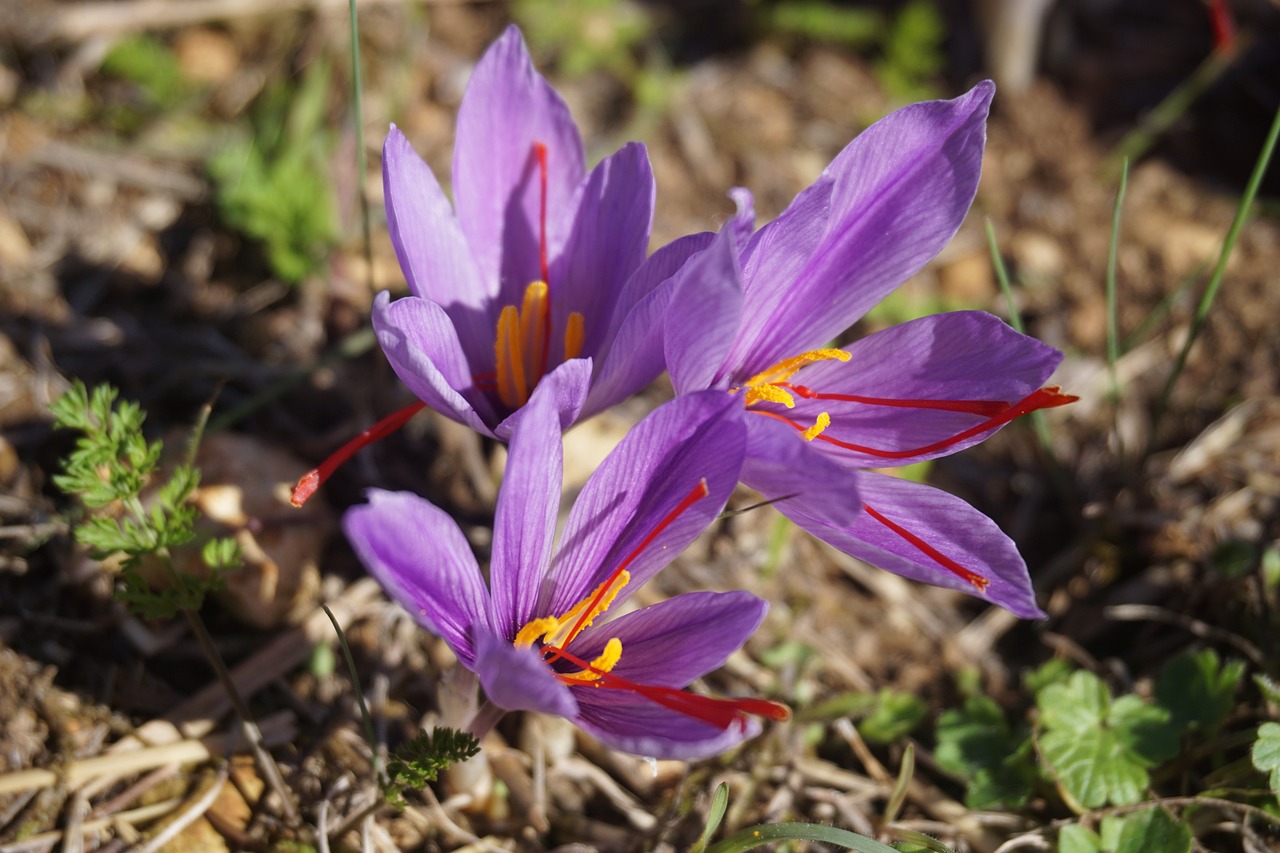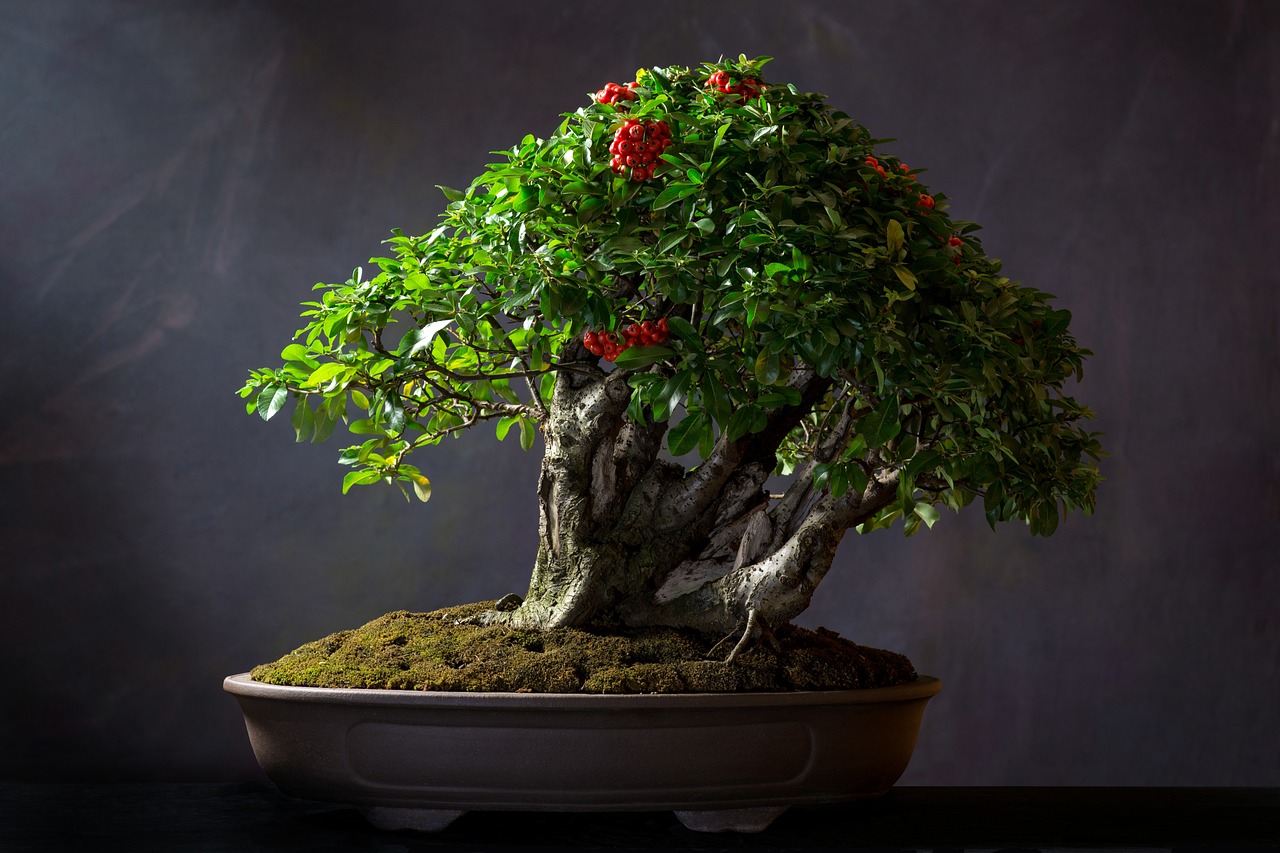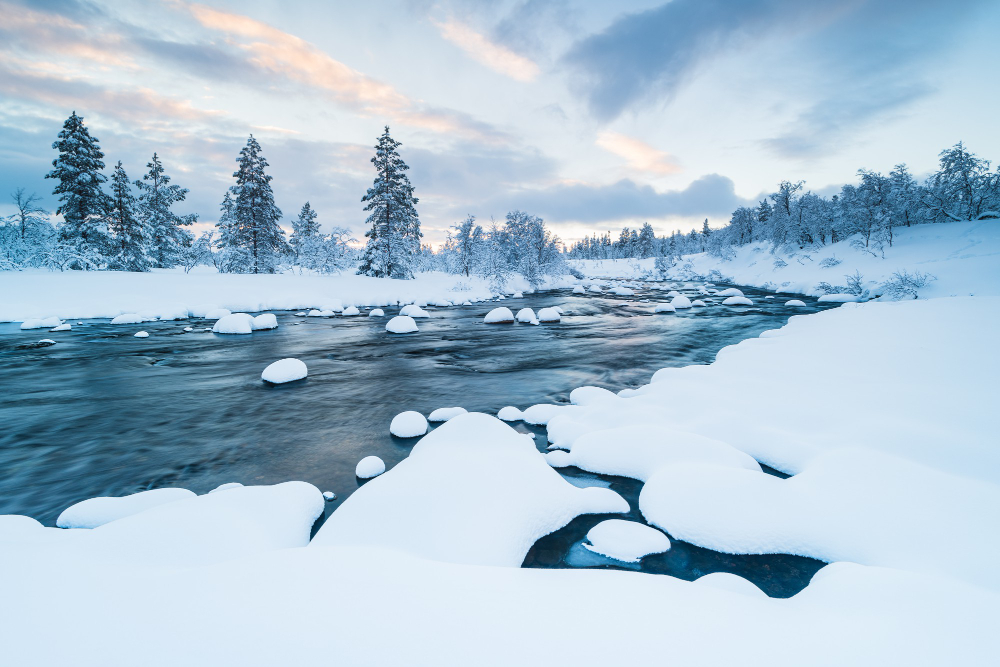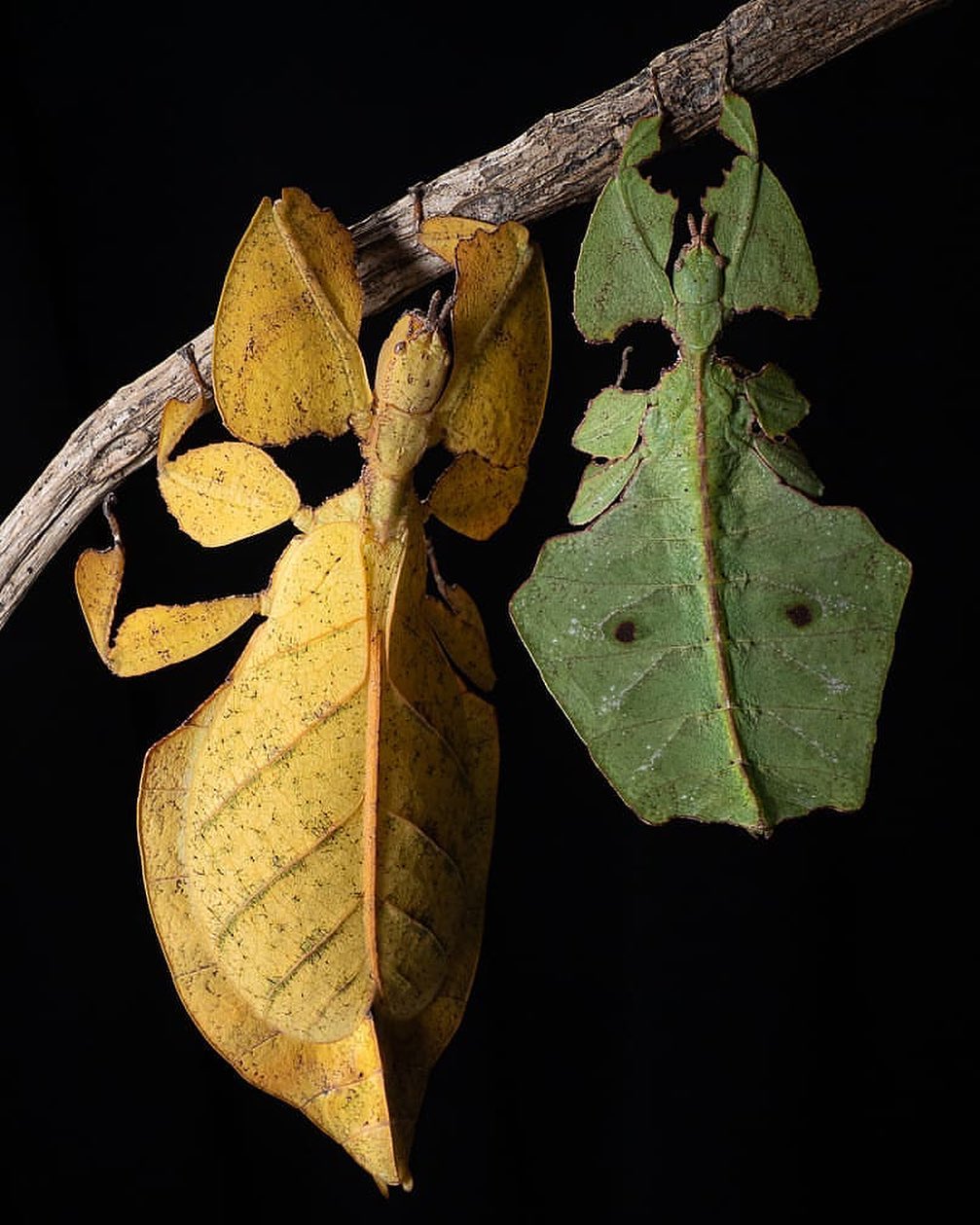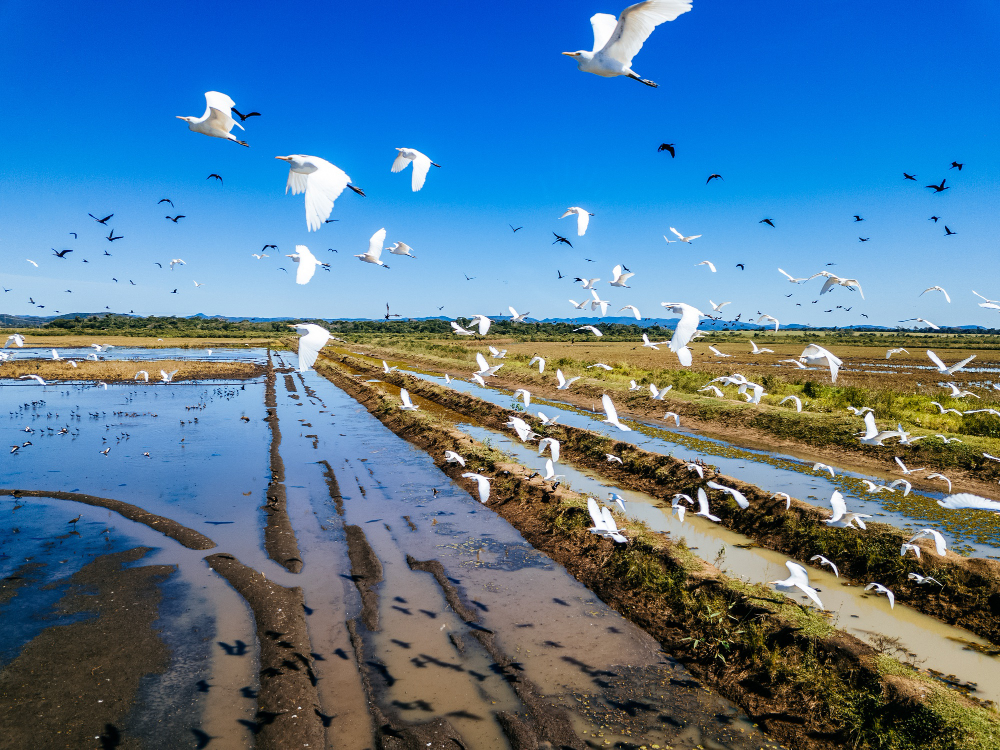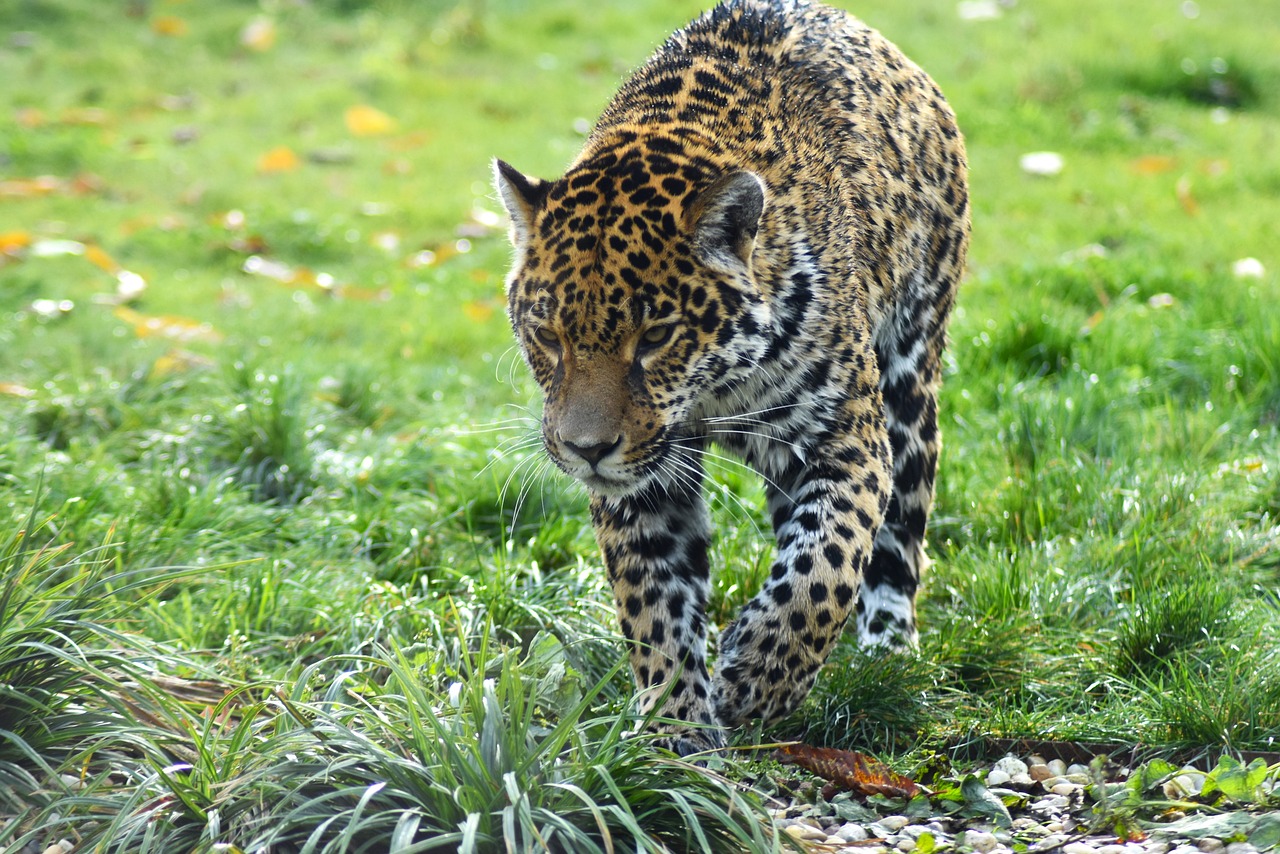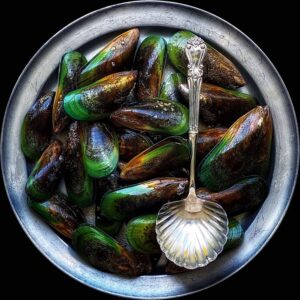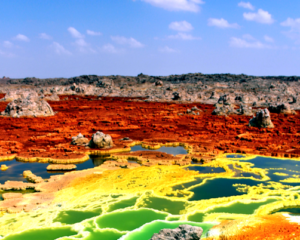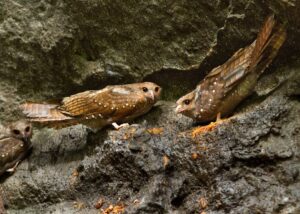India, with its diverse landscapes and climates, is a paradise for birdwatchers, especially during the winter season. Every year, as temperatures drop in the northern hemisphere, a spectacular influx of migratory birds takes place in India. These feathered visitors travel thousands of kilometers to escape the harsh winters of their homelands, making India their temporary home.
In this article, we’ll explore the top 10 migratory birds that visit India during the winter season and where you can spot them. So, grab your binoculars and let’s dive into the world of these magnificent travelers!
 Pin
Pin Image by Alexa from Pixabay
Table of Contents
1. Siberian Crane
 Pin
Pin Image by @omina000 via Instagram
Scientific Name: Leucogeranus leucogeranus
Migration Route: From Siberia to India via Central Asia
Where to Spot: Bharatpur Bird Sanctuary (Rajasthan)
The Siberian Crane is an exceptional bird, not just because of its beauty but also due to its rarity. These majestic creatures are critically endangered and have become a symbol of the fragility of migratory bird populations. With their snow-white feathers and striking black wingtips, they stand out vividly against India’s lush wetlands during their winter migration.
These cranes cover a whopping 6,000 kilometers to escape the freezing Siberian winters, crossing multiple countries and geographical barriers. Their journey is a testament to endurance and adaptability. In India, they are most famously associated with the Bharatpur Bird Sanctuary (Keoladeo National Park) in Rajasthan, where they used to arrive in significant numbers.
However, their population has dwindled over the years due to habitat destruction and hunting along their migratory route. Today, sighting a Siberian Crane is considered a privilege for birdwatchers.
- Why They’re Special: They are one of the longest-distance migratory birds. They depend on wetlands, which are rapidly shrinking globally.
- Conservation Note: Organizations and governments are collaborating internationally to protect their habitats and migratory routes.
2. Greater Flamingo
 Pin
Pin Photo by Kalidasan Gopi
Scientific Name: Phoenicopterus roseus
Migration Route: From Africa, the Middle East, and parts of Europe
Where to Spot: Rann of Kutch (Gujarat), Mumbai, and Chilika Lake (Odisha)
The Greater Flamingo is undoubtedly one of the most glamorous visitors to India’s wetlands. Known for their vibrant pink plumage, long necks, and slender legs, they transform landscapes into mesmerizing canvases during their stay. These birds arrive in India during the winter months to feed and breed, forming large, bustling colonies.
Flamingos get their pink color from the carotenoid pigments in their diet, which primarily consists of algae and small aquatic organisms. This dietary link makes them nature’s “mood ring,” with deeper pink hues indicating a healthy food supply.
The Rann of Kutch in Gujarat is their most iconic destination in India. During the annual Flamingo Festival, thousands of these birds gather here, offering a breathtaking spectacle. You can also spot them at Chilika Lake, Asia’s largest brackish water lagoon, and along Mumbai’s wetlands.
Why They’re Special: Flamingos are highly social and form colonies that can include thousands of birds. Their synchronized movements and courtship displays are a visual treat.
Tip: To witness their incredible gatherings, plan a visit to the Rann of Kutch during winter.
3. Bar-headed Goose
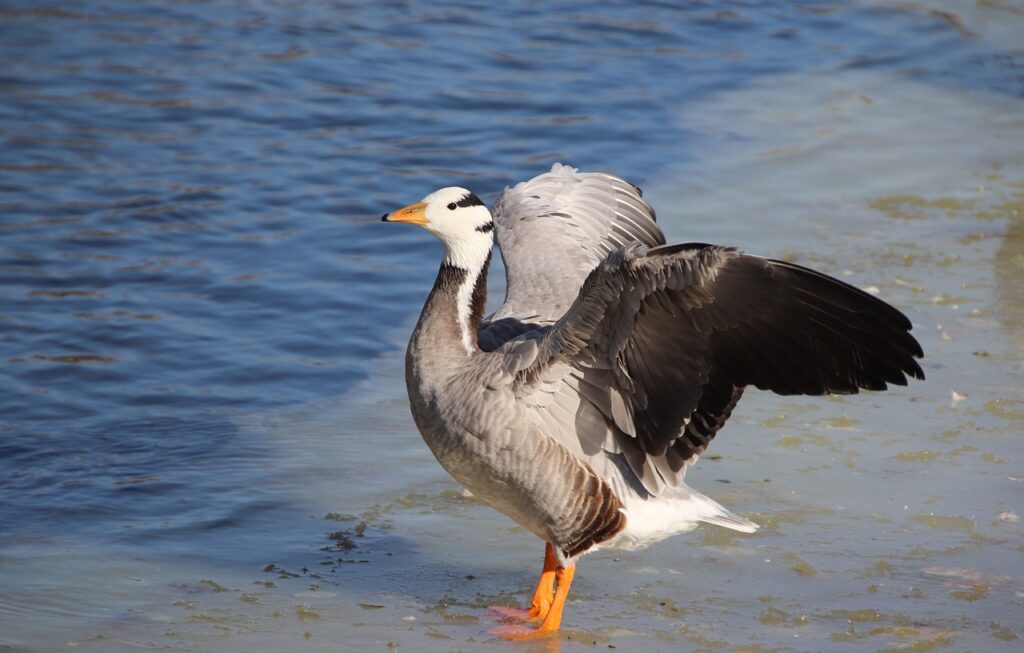 Pin
Pin Image by Zhu Bing from Pixabay
Scientific Name: Anser indicus
Migration Route: From Mongolia, Tibet, and Central Asia
Where to Spot: Pong Dam (Himachal Pradesh), Sultanpur Bird Sanctuary (Haryana), and Chilika Lake (Odisha)
The Bar-headed Goose is a marvel of nature, known for its astonishing ability to fly at altitudes of up to 29,000 feet, even over the towering Himalayas. With their light gray bodies and distinctive black bars on their heads, these geese are easily recognizable among other migratory waterfowl.
Their journey is one of the most physically demanding migrations, as they battle freezing temperatures and low oxygen levels while flying over some of the world’s tallest peaks. India serves as their winter refuge, where they feed on grains and aquatic vegetation in wetlands.
Popular spots to observe these birds include Pong Dam in Himachal Pradesh, Sultanpur Bird Sanctuary, and Chilika Lake. Their loud, honking calls and large flocks make them a delightful sight for birdwatchers.
Why They’re Special: They hold the record for the world’s highest-altitude migration. Their migration routes and behavior are still studied by scientists to understand high-altitude endurance.
Fun Fact: Bar-headed Geese can maintain a steady oxygen supply in their blood even at extreme altitudes.
4. Amur Falcon
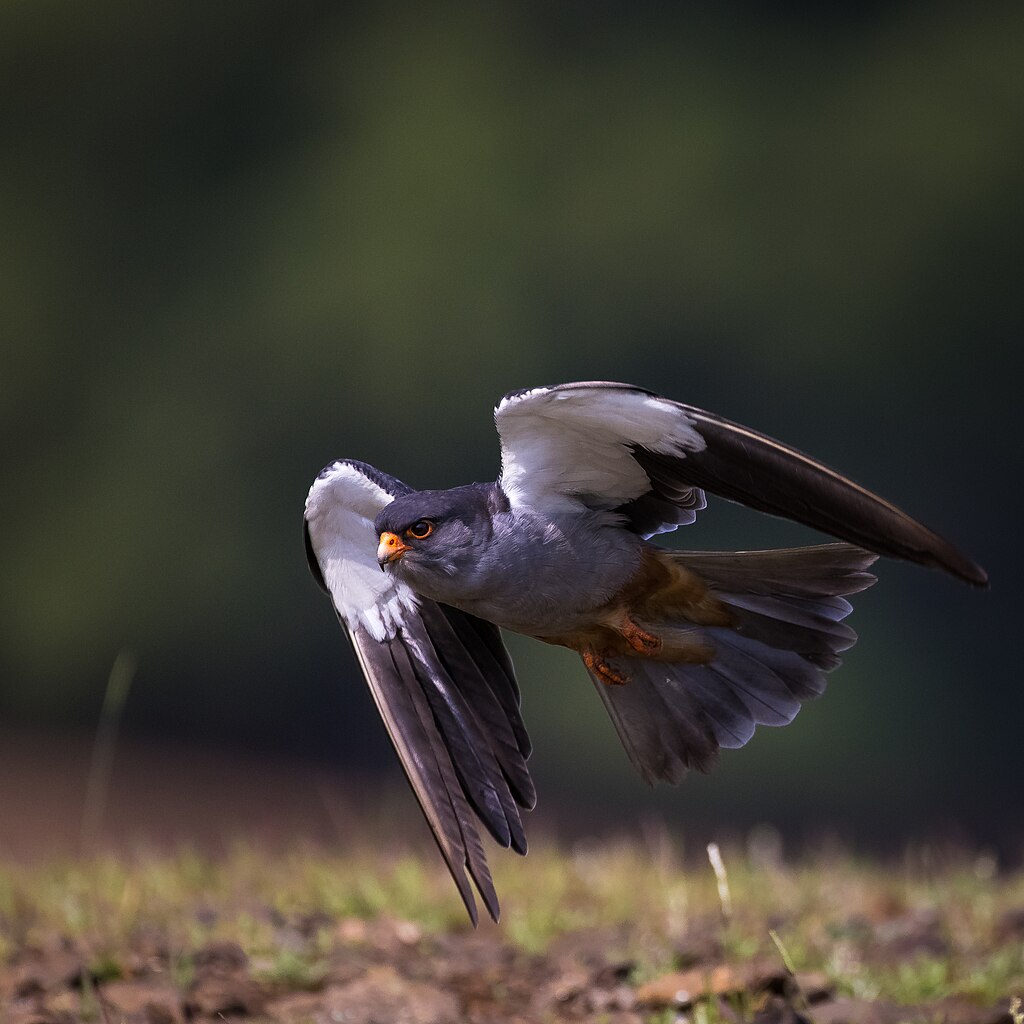 Pin
Pin Image by Sumeet Moghe via Wikimedia Commons
Scientific Name: Falco amurensis
Migration Route: From Siberia and China to Southern Africa, with a pit stop in India
Where to Spot: Nagaland, particularly at Doyang Lake
The Amur Falcon is a small but extraordinary raptor that undertakes one of the longest migratory journeys in the bird kingdom. Traveling over 22,000 kilometers annually, these falcons pass through India in vast numbers, particularly in the northeastern state of Nagaland.
Doyang Lake, often referred to as the “Falcon Capital of the World,” becomes a temporary roosting site for millions of these birds in October and November. Their synchronized flights and predatory prowess as they hunt insects are a spectacular natural phenomenon.
Amur Falcons are not just important for their ecological role but also for the cultural significance they hold in Nagaland. Once hunted, they are now protected through community-driven conservation efforts, making their presence a symbol of harmonious coexistence.
Why They’re Special: They make one of the longest migratory journeys of any raptor. Their stopover in Nagaland is one of the largest congregations of falcons globally.
Birdwatcher’s Tip: Visit during Nagaland’s Hornbill Festival, which coincides with the Amur Falcons’ migration.
5. Common Teal
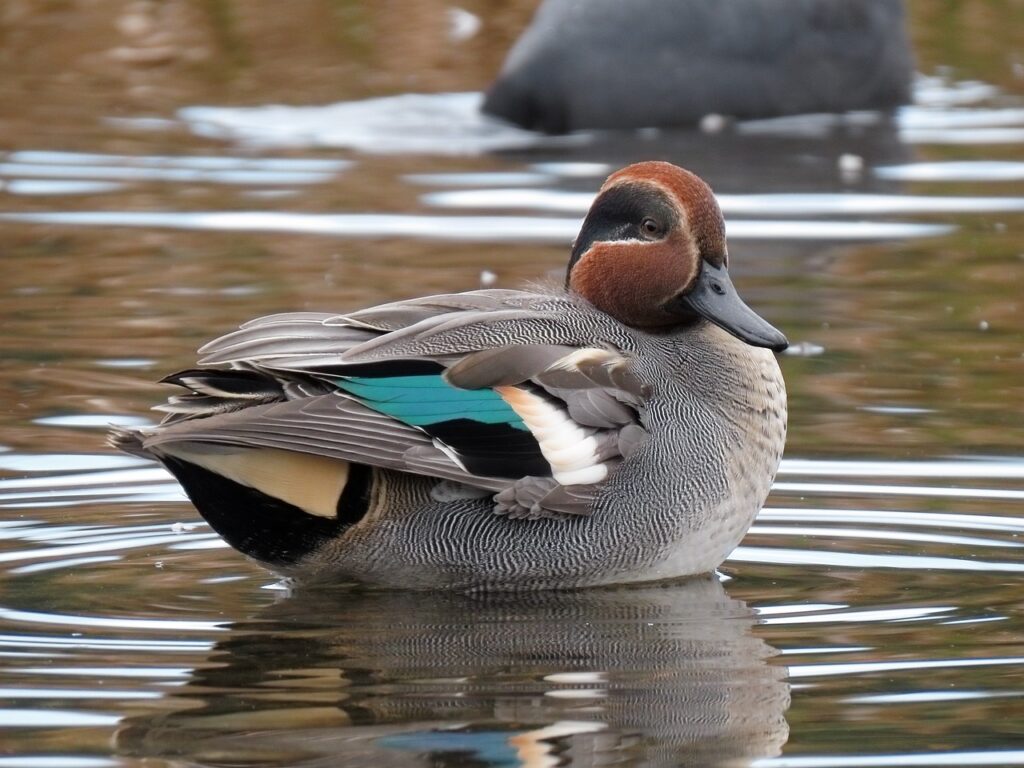 Pin
Pin Image by Canva via Pixabay
Scientific Name: Anas crecca
Migration Route: From Europe and Northern Asia
Where to Spot: Wetlands across India, including Keoladeo National Park (Rajasthan) and Vembanad Lake (Kerala)
The Common Teal is a charming dabbling duck that adds a dash of color and energy to India’s wetlands during winter. Male Common Teals are easily identifiable by their chestnut-colored heads adorned with vibrant green patches, while females exhibit more subdued patterns.
These birds are highly agile and often seen flying in zig-zag patterns to escape predators. They are social birds, forming flocks with other ducks and waterfowl. The best places to spot them include the Keoladeo National Park in Rajasthan and the scenic Vembanad Lake in Kerala.
Common Teals are an important part of wetland ecosystems, feeding on aquatic plants and small invertebrates. Their arrival marks the richness and health of India’s wetlands.
Why They’re Special: Their stunning plumage and energetic behavior make them a favorite among photographers. They contribute significantly to the ecological balance of wetlands.
Pro Tip: Visit during early mornings or late afternoons for the best chances to spot these active dabblers.
6. Northern Pintail
 Pin
Pin Image by J.M.Garg via Wikimedia Commons
Scientific Name: Anas acuta
Migration Route: From Arctic regions of Europe, Asia, and North America
Where to Spot: Bharatpur Bird Sanctuary (Rajasthan), Chilika Lake (Odisha), Sundarbans (West Bengal)
The Northern Pintail, often called the “elegant duck,” is a graceful migratory species known for its long, slender neck and pointed tail feathers. Males are especially striking, with their chocolate-brown heads, white necks, and a distinctively elongated central tail feather. Females, though more subdued in coloration, are equally captivating with their delicate patterns.
These ducks are highly social and often form large flocks, mingling with other waterfowl like teals and shovelers. Their presence adds vibrancy to India’s wetlands during winter. The Bharatpur Bird Sanctuary, Chilika Lake, and the Sundarbans are hotspots where you can spot them feeding on seeds, aquatic plants, and small invertebrates.
Observation Tip: Look to the skies for their iconic V-shaped flight patterns during migration. Their synchronized movements are a treat for birdwatchers.
Interesting Fact: Northern Pintails are among the fastest ducks, capable of reaching speeds of up to 105 km/h.
7. Ruddy Shelduck (Brahminy Duck)
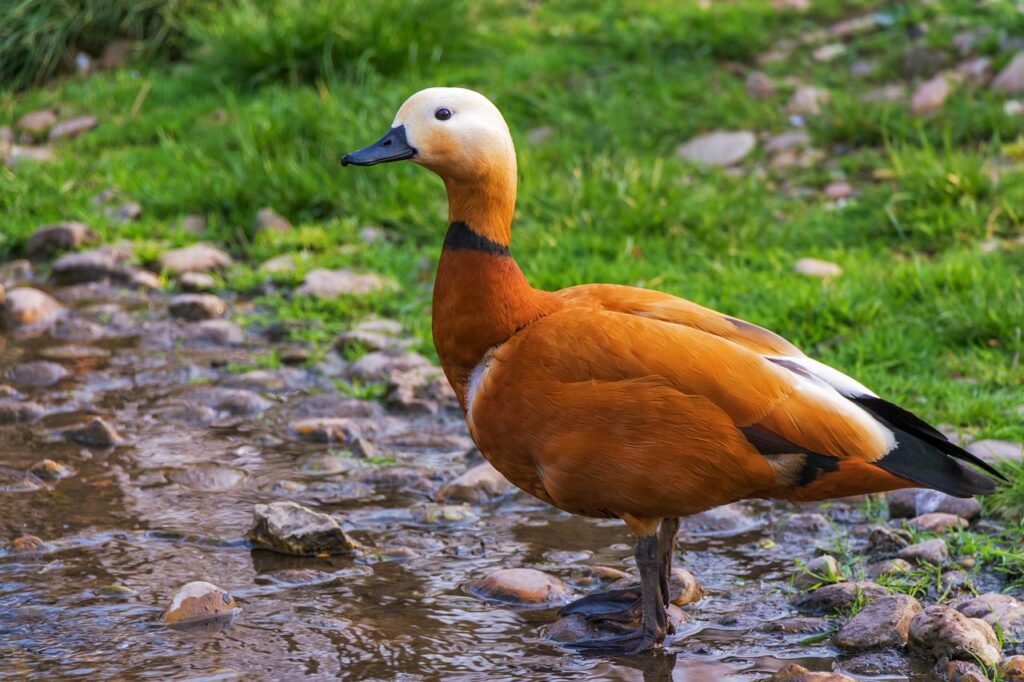 Pin
Pin Image by Robert Balog from Pixabay
Scientific Name: Tadorna ferruginea
Migration Route: From Central Asia and Mongolia
Where to Spot: Pong Dam (Himachal Pradesh), Nalsarovar Bird Sanctuary (Gujarat), Ladakh (Jammu and Kashmir)
The Ruddy Shelduck, commonly referred to as the “Brahminy Duck” in India, is easily recognizable by its stunning orange-brown plumage and contrasting black wingtips. These migratory ducks prefer freshwater lakes, rivers, and marshes, where they can be seen in pairs or small groups. Unlike many other ducks, they are known to be highly vocal, often communicating with a series of honking calls.
In Ladakh, the Ruddy Shelduck holds special cultural significance and is often considered sacred, with mentions in Buddhist folklore. Their serene presence near high-altitude lakes like Pangong Tso adds to the region’s spiritual and natural charm.
Why They’re Special: These ducks are monogamous and exhibit strong pair bonds, often staying with their partners year-round.
Fun Fact: The Ruddy Shelduck is an excellent swimmer but rarely dives, preferring to forage in shallow waters.
8. Rosy Starling
 Pin
Pin Image by Koshy Koshy via Wikimedia Commons
Scientific Name: Pastor roseus
Migration Route: From Eastern Europe and Central Asia
Where to Spot: Grasslands and urban areas across India, including Maharashtra and Gujarat
The Rosy Starling is a delightful small bird with a mix of pink and black plumage. Their arrival in India coincides with the onset of winter, and they are often seen in noisy, bustling flocks. Known for their synchronized movements and agile flight, these birds are as entertaining to watch as they are beautiful.
Apart from their striking appearance, Rosy Starlings are nature’s pest controllers. They feed on insects, particularly locusts and grasshoppers, making them beneficial for agricultural regions. Their adaptability allows them to thrive in urban and semi-urban areas, where they can be seen roosting on trees or even power lines.
Why They’re Special: These birds are a perfect example of teamwork, sticking together in large flocks for safety and efficiency while feeding.
Did You Know? Rosy Starlings are also great mimics and can imitate the calls of other birds.
9. Demoiselle Crane
 Pin
Pin Image by UdayKiran28 via Wikimedia Commons
Scientific Name: Grus virgo
Migration Route: From Eurasia and Mongolia to India
Where to Spot: Khichan Village (Rajasthan)
The Demoiselle Crane, the smallest of the crane species, is a symbol of elegance and endurance. These slender birds, with their graceful black-and-white plumage and long legs, make an incredible journey from Mongolia and Eurasia to India every winter. They prefer open plains and semi-arid regions, making Khichan Village in Rajasthan their favorite wintering spot.
What makes their story unique is the extraordinary human-bird relationship in Khichan. The villagers, known for their hospitality, welcome thousands of Demoiselle Cranes every year, feeding them grain and ensuring a safe environment. This act of kindness has turned the village into a birdwatcher’s paradise.
Why They’re Special: The Demoiselle Crane is named after its delicate appearance, reminiscent of a dainty dancer.
Interesting Story: The locals in Khichan have been feeding these cranes for over 50 years, a tradition that started with a single villager’s act of generosity.
10. Bluethroat
 Pin
Pin Image by Peter Kasteren van from Pixabay
Scientific Name: Luscinia svecica
Migration Route: From Europe and Siberia
Where to Spot: Himalayan foothills, Bharatpur (Rajasthan), and Sundarbans (West Bengal)
The Bluethroat is a tiny yet captivating songbird known for its brilliant blue throat, which is often adorned with red or white spots, depending on the subspecies. Males are especially striking during the breeding season, using their colorful plumage and melodious songs to attract mates.
During winter, these birds migrate to India and can be spotted in reed beds, marshes, and scrublands. Their secretive nature often makes them a challenge to spot, but patient birdwatchers are rewarded with the sight of this stunning bird foraging on the ground or among low vegetation.
Why They’re Special: Bluethroats are known for their diverse and melodious songs, which often include imitations of other bird calls.
Pro Tip: Early mornings are the best time to spot Bluethroats as they are most active during this time, often hopping out of their hiding spots to feed.
How Migratory Birds Navigate Long Distances
Migratory birds undertake incredible journeys across continents, often covering thousands of kilometers to find suitable habitats for feeding, breeding, and survival. Their ability to navigate such long distances is one of nature’s greatest marvels, relying on a combination of innate instincts, environmental cues, and physiological adaptations.
1. Magnetic Fields:Birds are believed to have an internal magnetic compass that helps them sense Earth’s magnetic field. This ability, called magnetoreception, enables them to determine their position and direction, even on cloudy days or at night.
2. Celestial Navigation: Many migratory birds use the sun, moon, and stars to guide their journey. They rely on the position of celestial bodies to maintain their course, adjusting for time and seasonal changes.
3. Landmarks and Memory: Birds often use natural landmarks such as rivers, mountains, and coastlines as reference points. Their remarkable memory and keen eyesight help them recognize these features.
4. Sense of Smell: Recent studies suggest that some birds use their sense of smell to navigate, particularly in areas with fewer visual cues.
5. Social Learning: In species that migrate in groups, younger birds often follow experienced adults who know the migratory routes.
These combined strategies make migratory birds master navigators, enduring extreme weather and long distances with precision and resilience.
Why Do Migratory Birds Choose India?
India’s diverse topography, abundant water bodies, and moderate winter climate make it an ideal destination for migratory birds. Here’s why these birds prefer India:
- Ample Food Supply: Wetlands and forests in India offer plenty of food, including fish, insects, and grains.
- Safe Roosting Sites: Many bird sanctuaries provide protected habitats.
- Favorable Climate: Compared to the harsh winters of their native regions, India’s mild winters are a perfect escape.
Conclusion
India’s winter season is a golden opportunity to witness the incredible journeys of migratory birds. From the pink-hued Flamingos to the elegant Demoiselle Cranes, each species adds a unique charm to the country’s biodiversity. So, whether you’re a seasoned birder or a curious traveler, make sure to add these destinations to your bucket list and experience the magic of migration firsthand.
Happy birdwatching!

